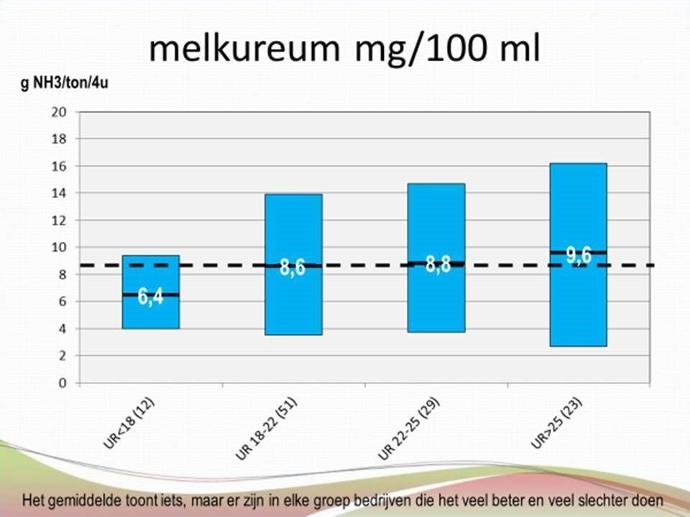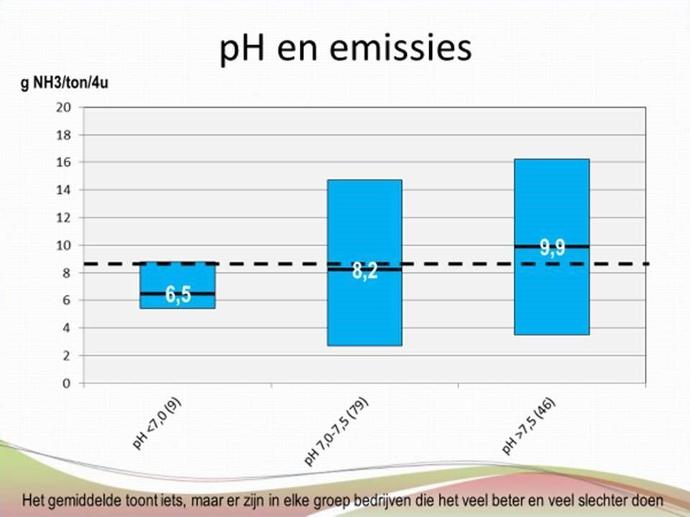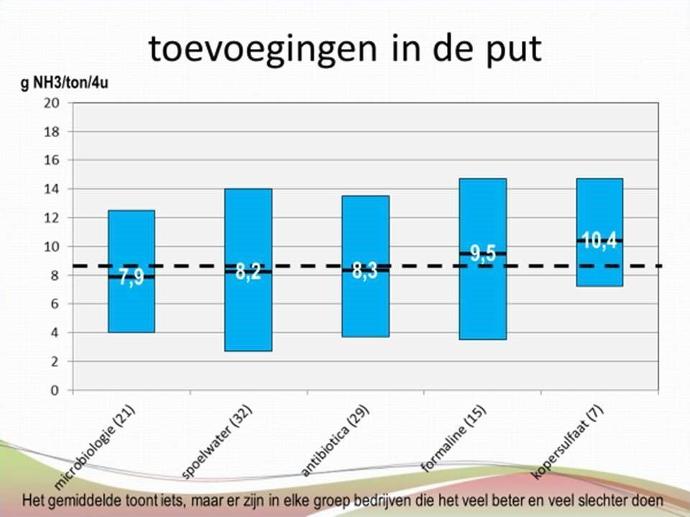Emission and N efficiency of slurry,
the report that every dairy farmer should read ... and actually every arable farmer
Not without pride, we hereby present the report of the study "Slurry, Emission and Nitrogen Utilisation"
This study was conducted by Peter Vanhoof and Anton Nigten on behalf of the VBBM and 10 sponsoring companies, including Napagro.
The great merit of this study is that it looks at the total cycle rather than isolated partial aspects (such as dense barn floors or emissions at discharge);
Notable outcomes and areas of concern in terms of emissions:
No single product or treatment of manure gives a reduction in NH3 emissions in all cases: there is no single magic solution to reduce emissions
Substantially lower emissions of up to -30% are possible, however, through a modified ration supplemented by some good practice:
> sturen op een erum < 20 (zie blz. 14)
no chemistry in the manure pit (formalin, cleaning agents)
No lime in the boxes (this increases the pH and therefore more NH4 > NH3 conversion)
aerating the pit, rock flour in the boxes, impact powder in the ration, ...
In terms of nitrogen utilisation on land (KGs N fertilisation converted to KGs protein in 1° cut), the following points stand out, among others :
Lower dosage works much better: max 20m² at a time and preferably less
Later is better: preferably fertilise in March rather than February, in connection with soil temperature
above-ground fertilisation allows more than 100% utilisation to be achieved : in other words, soil life provides additional N fertilisation and thus enables substantial savings on fertiliser. (page 21)
water toevoegen werkt beter (minder schade aan bodemleven)
fertiliser use on top of good slurry lowers N efficiency (this is mainly a C/N issue)
Sufficient Molybdenum and Boron are important for good nitrogen utilisation
high OEB values in feed give lower N utilisation (page 26)
We recommend reading and distributing this report in local study clubs and circles. Also bring it to the table in consultations with local authorities, with nature associations and at meetings of farmers' organisations.
Peter Vanhoof has put together an engaging lecture of about 2.5 to 3 hours, which provides insight into the impact of even more variables. Some of the slides are pasted into this email. You can book a lecture through us or directly with Peter.
The intention is to repeat this study in spring 2021, on a large scale and even broader in terms of analysis:
Extend N utilisation from 1° cut to all cuts in a year
toevoegen van Kinsey bodemanalyses
uitspoeling van nitraat in de bodem
Arable farmers would do well to master the characteristics of good slurry and have a bit more to spare for this. We think of pH < 7 ; EC < 1.5 ; organic bound N > 55% of total N.
Our tests show that good slurry can deliver +10% more yield compared to 'average slurry'.
Locally closed cycles thus bring in a lot of money for livestock and arable farmers.
Some nice trials in terms of fertilisation are in the pipeline again for 2020:
can the combination "improved slurry + compost" help reduce fertiliser application by 50% to 75% in potato cultivation?
How does top-dressing work out compared to injection in arable farming (4-year trial)?
Can plastic-free arable farming become profitable by actively stimulating soil life at the same time (4-year trial)?
Want to know more about our approach or interested in a lecture? Just send a message.





